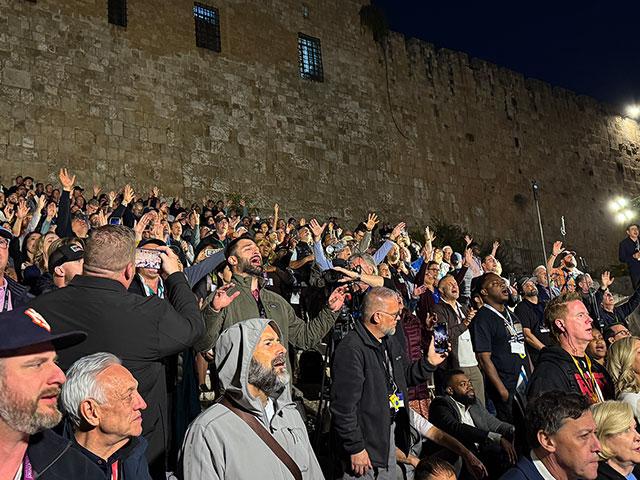For the first time, you can see part of the world's oldest Christian site of worship. The Megiddo Mosaic, discovered during the construction of a prison in Israel, dates back to the third century.
Since its premiere at the Museum of the Bible in Washington, D.C., curators say the exhibit has already drawn in thousands of visitors from all over the world.
"We now have rediscovered it and came to witness Christianity [from] so far back," said Deshaun Mills, a visitor from Jacksonville, Florida.
Behind each of these original artifacts lies a powerful story reaching across generations.
"It's kind of crazy. And how they just finally discovered it, which is pretty significant," said Peyton, a visitor from Colorado. "This exhibit for sure has been my favorite part."
From teenagers to history teachers, like Maurice Corollo, there was an eagerness to learn. "What we teach is something that is an artifact," said Corollo. "Something that is real and something that, most importantly, is interesting (and) really profound for students."
'Greatest Discovery in Israel Since the Dead Sea Scrolls'
Historians like Dr. Bobby Duke, the Interim Chief Curatorial Officer and Director of the Scholars Initiative at the Museum of the Bible, describe the Megiddo Mosaic as the greatest discovery in Israel since the Dead Sea Scrolls.
"When I heard about this mosaic and read the story behind it, I got the same kind of chills and the same kind of goosebumps," Dr. Duke said.
"I would say the question we get asked the most often is, 'Is it real?'" said Dr. Duke. "It does date back to the third century AD 230."
This was a period before Christianity was recognized as an official religion in the Roman Empire.
The Megiddo Mosaic features a table used for communion, and a design showing two fish: early symbols of Christianity with hand-crafted, geometric patterns. "To make the designs that we see even around this flooring here, I mean, that takes hours and hours and hours," said Duke.
The mosaic likely decorated one of the oldest Christian prayer halls in Megiddo, a city located in Canaan.
In the 1940s, this site of ancient worship was buried under a newly built maximum-security prison, where it remained for nearly 60 years. Then, in 2005, archaeologists accidentally rediscovered it.
"They were wanting to do some construction, and whenever you do construction in Israel, you have to do a salvage archeological dig to make sure that you're not constructing over something significant," Duke explained.
He added they carefully excavated the mosaic, hiding it securely in Northern Israel, until flying it to Washington D.C. for its first public appearance.
Inscriptions on the Mosaic: 'God, Jesus Christ'
The Mosaic is filled with exciting features, including three inscriptions.
"The first one right here is dedicated to a man named Gaianus," said Dr. Duke.
Historians say Gaianus was a Roman Centurion who helped fund the mosaic floor and table; a rare show of unity between Romans and Christians.
The second inscription describes some key women in early Christianity, while the third marks history.
"This phrase, 'God, Jesus Christ,' is, in the fifth line of the inscription, and it is actually in a shortened form," said Dr. Duke. "So, the letters that have the lines over them, [are] actually a respectful way to write those words."
***Please sign up for CBN Newsletters and download the CBN News app to ensure you keep receiving the latest news from a distinctly Christian perspective.***
Dr. Duke believes these early writings are some of the first to show belief in the deity of Jesus, with this inscription from a Christian woman identified as Akeptous, that reads, "God Jesus Christ".
The Megiddo Mosaic is one that Dr. Duke hopes will open up a world of possibilities for future discoveries.
"I think the thing that excites me the most is, we never know what the next excavation is going to show and demonstrate," Dr. Duke said. "No one before 2005 would have ever dreamed we would have found something as beautiful and significant as this. What's around the corner?"
The Megiddo Mosaic exhibit, which runs through 2026 at the Museum of the Bible, is free to the public.
Did you know?
God is everywhere—even in the news. That’s why we view every news story through the lens of faith. We are committed to delivering quality independent Christian journalism you can trust. But it takes a lot of hard work, time, and money to do what we do. Help us continue to be a voice for truth in the media by supporting CBN News for as little as $1.












 Support CBN News
Support CBN News







